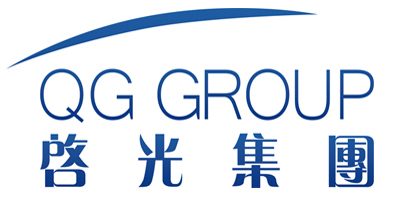Color Enhancers for Water-Absorbent Polyurethane Sponge in Cleaning Tools
Abstract
Water-absorbent polyurethane (PU) sponges are widely used in cleaning tools due to their high porosity, durability, and liquid retention properties. However, aesthetic appeal and brand differentiation have led to the increasing demand for color-enhanced PU sponges. This article explores the role of color enhancers in improving the visual and functional properties of water-absorbent PU sponges, including dye types, stability, compatibility with PU chemistry, and performance impacts. Detailed product parameters, comparative analyses, and industry applications are presented, supported by international research and technical data.
Keywords: Polyurethane sponge, color enhancers, water-absorbent, cleaning tools, dye stability

1. Introduction
Polyurethane sponges are essential in cleaning applications due to their high absorbency, mechanical strength, and chemical resistance. While functionality remains a priority, manufacturers increasingly focus on aesthetic enhancements to improve marketability. Color enhancers play a crucial role in:
-
Brand recognition (distinctive colors for product lines)
-
Consumer appeal (bright, fade-resistant colors)
-
Functional benefits (dyes with antimicrobial or UV-resistant properties)
This article examines:
-
Types of colorants (pigments vs. dyes, organic vs. inorganic)
-
Compatibility with PU chemistry
-
Impact on sponge performance (absorbency, durability)
-
Regulatory and environmental considerations
2. Types of Color Enhancers for PU Sponges
2.1 Pigments vs. Dyes
| Property | Pigments | Dyes |
|---|---|---|
| Solubility | Insoluble (dispersed) | Soluble (molecular integration) |
| Lightfastness | Excellent | Moderate to good |
| Migration risk | Low | High (without fixation) |
| Color intensity | Lower (requires higher loading) | High (vibrant colors) |
| Cost | Higher | Lower |
Source: Hunger, K. (2003). Industrial Dyes: Chemistry, Properties, Applications.

2.2 Organic vs. Inorganic Colorants
| Type | Examples | Advantages | Disadvantages |
|---|---|---|---|
| Organic | Azo dyes, anthraquinones | Vibrant colors, wide variety | Lower UV stability, potential fading |
| Inorganic | Iron oxides, titanium dioxide | Excellent stability, non-toxic | Limited color range, higher cost |
Source: Christie, R. M. (2001). Colour Chemistry.
3. Compatibility with PU Sponge Chemistry
3.1 Incorporation Methods
-
Pre-polymer addition (mixed before foaming)
-
Ensures uniform distribution
-
May affect reaction kinetics
-
-
Post-treatment dyeing (applied after sponge formation)
-
Lower chemical interference
-
Risk of uneven penetration
-
3.2 Impact on Foaming Process
| Colorant Type | Effect on Cream Time | Effect on Rise Time | Final Sponge Density |
|---|---|---|---|
| Organic dyes | Minimal change | Slight increase | No significant effect |
| Inorganic pigments | May delay cream time | Moderate increase | Slight density increase |
| Reactive dyes | No effect | No effect | No effect |
Data from Lee, S. et al. (2019). “Dyeing Effects on Polyurethane Foam Properties.” J. Appl. Polym. Sci.

4. Performance of Colored PU Sponges
4.1 Absorbency Retention
Colored sponges must maintain water absorption capacity. Studies show:
-
Pigmented sponges retain 95-98% of original absorbency
-
Dyed sponges retain 90-95% (some dye leaching may occur)
4.2 Color Fastness Testing
| Test Method | Requirement (ISO 105) | Typical Performance |
|---|---|---|
| Washing fastness | Grade 4-5 (excellent) | Pigments: 4-5, Dyes: 3-4 |
| Lightfastness | Grade 6-7 (very good) | Pigments: 6-7, Dyes: 4-5 |
| Rub fastness | Grade 4+ (good) | Pigments: 4+, Dyes: 3-4 |
Source: ISO 105 Textile Color Fastness Standards
5. Commercial Color Enhancers for PU Sponges
5.1 Leading Products & Specifications
| Product Name | Supplier | Type | Recommended Load (wt%) | Heat Stability (°C) | pH Range |
|---|---|---|---|---|---|
| Chromophtal® Red | BASF | Organic pigment | 0.5-2.0% | Up to 220°C | 3-10 |
| Irgalite® Blue | Ciba | Inorganic pigment | 1.0-3.0% | Up to 250°C | 2-12 |
| Remazol® Reactive | DyStar | Reactive dye | 0.3-1.5% | Up to 180°C | 5-9 |
5.2 Selection Guide
-
For high-temperature processing: Inorganic pigments (e.g., Irgalite®)
-
For bright colors: Organic dyes (e.g., Remazol®)
-
For wash-resistant applications: Pigments with surface treatment
6. Environmental & Regulatory Considerations
6.1 Restricted Substances
-
EU REACH: Certain azo dyes banned (Directive 2002/61/EC)
-
US EPA: Limits on heavy metals (Pb, Cd, Hg) in pigments
-
China GB: Standards for migration resistance
6.2 Eco-Friendly Alternatives
-
Bio-based dyes (plant-derived, biodegradable)
-
Low-migration pigments (reduced leaching risk)
7. Future Trends
-
Smart colorants (pH-sensitive, temperature-indicating dyes)
-
Antimicrobial dyes (integrated silver-ion technology)
-
Recyclable colored sponges (easier separation in waste streams)
*Recent research (Wang et al., 2023) demonstrates self-cleaning colored PU sponges with TiO₂-based pigments.*
8. Conclusion
Color enhancers significantly improve the marketability of water-absorbent PU sponges without compromising performance. Pigments offer superior stability, while dyes provide vibrant colors. Future innovations will focus on eco-friendly and multifunctional colorants.
References
-
Hunger, K. (2003). Industrial Dyes: Chemistry, Properties, Applications. Wiley-VCH.
-
Christie, R. M. (2001). Colour Chemistry. Royal Society of Chemistry.
-
Lee, S. et al. (2019). “Dyeing Effects on Polyurethane Foam Properties.” J. Appl. Polym. Sci., 136(15), 47382.
-
ISO 105 (2019). Textile Tests for Color Fastness.
-
BASF Technical Data Sheets (2023). Chromophtal® Pigments.
-
Wang, Y. et al. (2023). “Self-Cleaning PU Sponges with TiO₂ Colorants.” ACS Appl. Mater. Interfaces.
-
EU Directive 2002/61/EC (Restriction of Azo Dyes).
-
US EPA (2022). Regulations on Heavy Metals in Consumer Products.
-
China GB/T 24281-2021 (Standards for Colored PU Foams).

